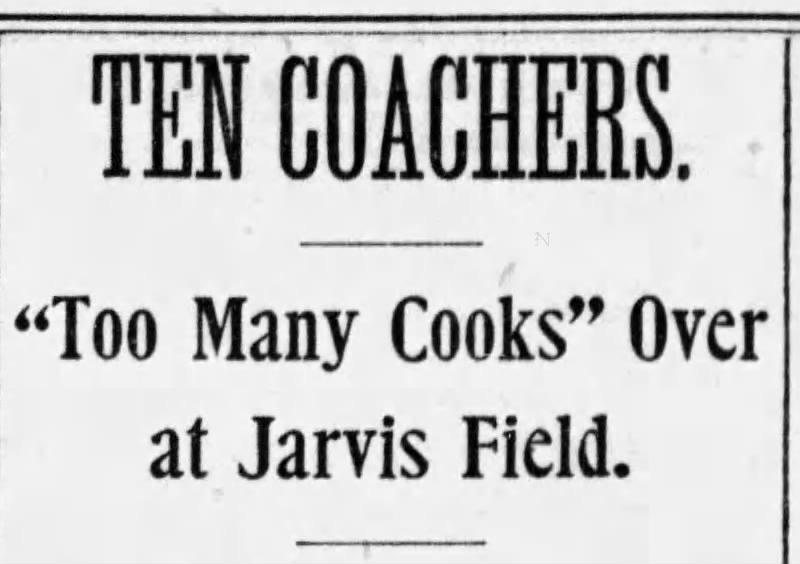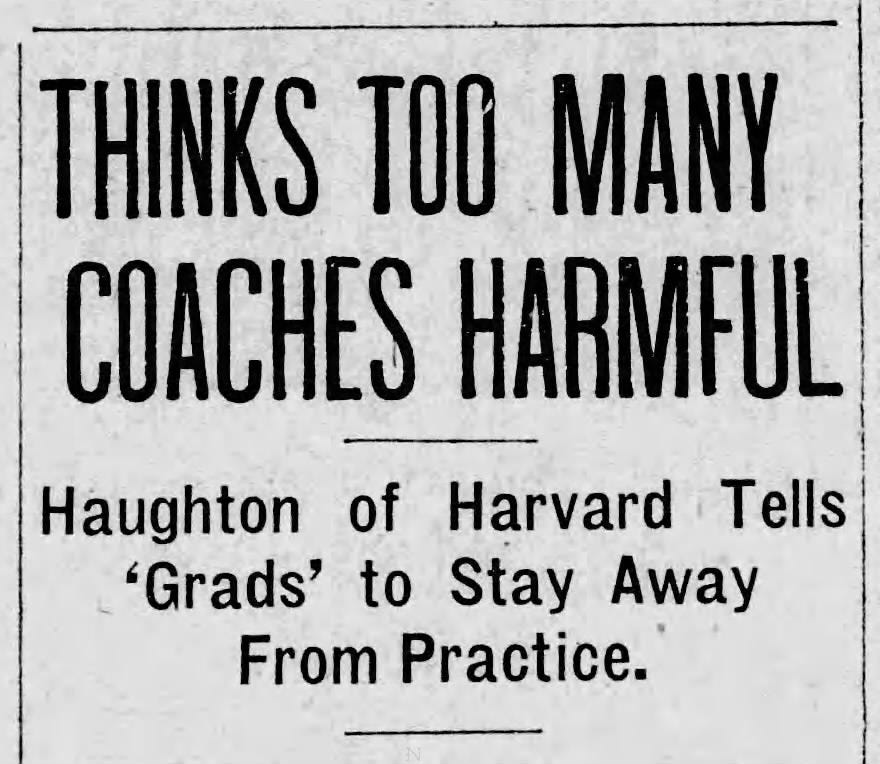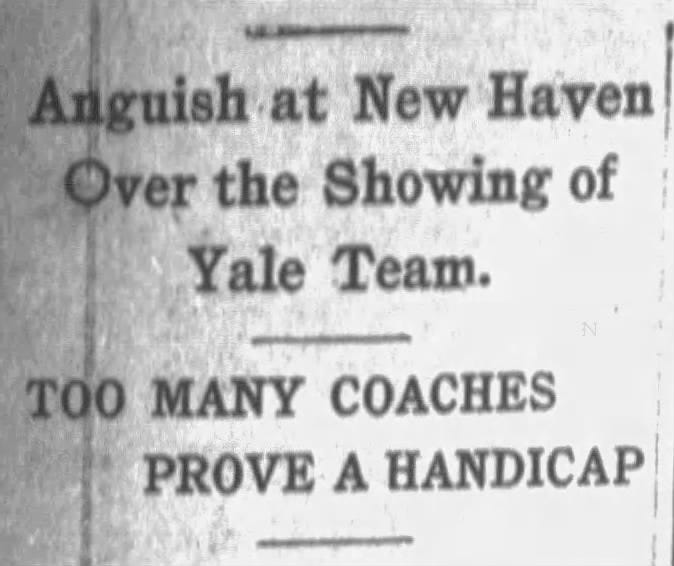Today's Tidbit... Too Many Coachers
American football began as a club sport. The captain led the team in all matters, and he and other experienced players taught the newbies the fundamentals of the game. There were no coaches.
Three coaching trends emerged as the game grew in popularity and spread nationwide. First, the top Eastern schools often had the previous year's captain remain on campus to instruct the following year's team. He commonly received assistance from former players who lived in the area or returned to campus before the big game. They taught the fine points of football to individual players. Relying on recent graduates and periodic volunteer assistants to coach teams became known as the graduate system.
Second, colleges not among the top Eastern schools hired and paid recent Eastern players to handle their teams, allowing the Yale or Princeton system gospel to spread to the hinterland. Some of those paid coaches proved successful, leading to the professional coaching model. Third, beginning in the late 1880s, Americans began referring to these instructors as coachers or coaches, terms they borrowed from the British.
Regardless of the terms used to describe the coachers, the graduate system became the norm in the East, while the professional model took root elsewhere, but the graduate system ultimately proved problematic for several reasons. One was that the previous year's captains lacked the experience and perspective of experienced coaches. They knew the approach and techniques taught at their alma mater and little else. Also, since they coached for only a year or two, they focused on the team's short-term success, not preparing the team for the longer-term. I argue in an upcoming book about the early forward pass that the graduate system's parochial and short-term perspective contributed to East Coast teams making little use of the forward pass in the first decade following its adoption. Carlisle and Springfield College were Eastern exceptions; both had professional coaches.
Of course, another reason the graduate system struggled was the inability of recent captains to control the alums who showed up to coach. Those who lived in town might assist regularly and provide coaching consistent with the nominal head coach's directions, but many showed up as they wanted, teaching what they know rather than what the head coach wanted.
The challenges of having too many and uncoordinated crews of coaches on the field appeared as early as 1893 when the "too many cooks" analogy appeared for the first of many times.
Garrett Cochrane, Princeton's coach in 1902, recognized the challenge brought by too many coaches and insisted that any graduate coaches appearing on the field adhere to the system decided on for that season. The team went 8-1, so he got something right.
Percy Haughton at Harvard did his best to limit the number of coaches influencing his teams early in his tenure, but other coaches and schools were less successful.
Too many cooks led to issues at school after school, peaking as an issue and receiving much of the blame for poor on-the-field performance in the mid-Teens.
Tommy Mills, Creighton's coach in 1915, mentioned in the last headline above, described how he learned his lesson about the problematic nature of graduate coaching:
Back in 1909 I watched football practice at my old school, Beloit. I saw the linemen crouching down in what I thought was an improper manner.
Thinking it my prerogative as an alumnus to correct their mistake, I rushed out on the field and started to show the lineman the 'proper' position. The coach rushed over and booted me off the field.
He turned out a winning team. Since then I haven't butted in.
In the end, too many coaches lacking appropriate coordination were problematic, and the challenge was aggravated by football’s increasing use of sophisticated schemes involving pre-snap shifts and the forward pass. The days of focusing on individual techniques, which better fit the graduate system, were over.
As the 1910s progressed, schools increasingly moved away from the graduate system and, following WWI, the graduate system was gone. Instead, schools hired professional coaches. Some were alums and some were not, but the professional coach and their designated assistants ruled the roost. Once the graduate system and extraneous coaches were banished from the field, other factors took the blame for poor coaching.
For additional reading on the topic:
Click here for options on how to support this site beyond a free subscription.










